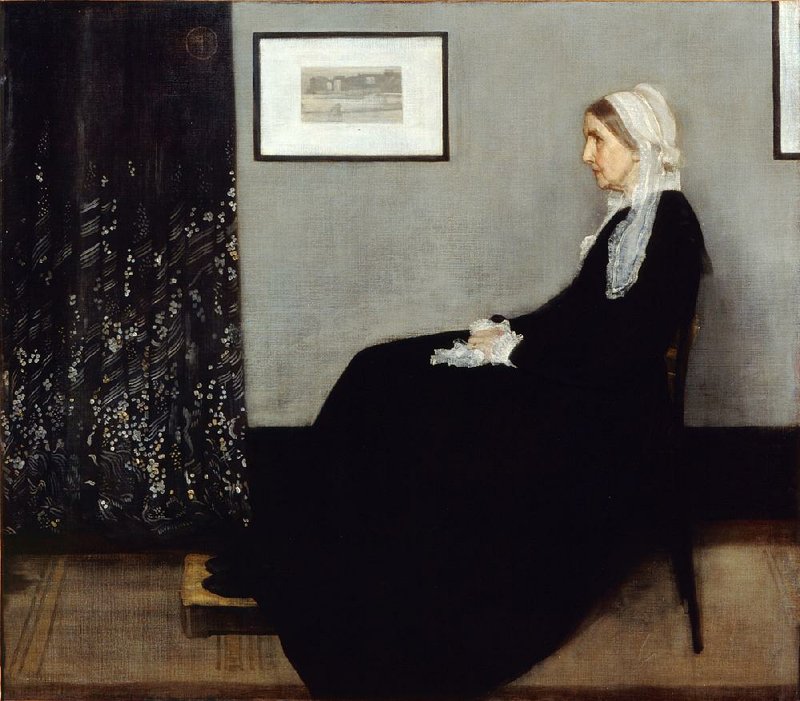He was one of the first celebrity artists, equal parts painter, showman and pugilist. He was James McNeill Whistler, always controversial and often the center of attention. Now Whistler is the subject of a copiously detailed biography, Whistler: A Life for Art's Sake, by University of Arkansas at Fayetteville professor Daniel E. Sutherland (Yale University Press, $40).
Sutherland has been at UA since 1989 and written a bevy of books on the Civil War and other 19th-century topics. The history professor was tired of writing about the war, and had always wanted to write a biography. "He [Whistler] had always fascinated me, and I did not think that any of his previous biographers had done him justice."
Sutherland's tome begins by following Whistler from his birth in Lowell, Mass., through his childhood in the United States, Russia and England. He had a turbulent, but colorful, upbringing that was punctuated by the sudden death of his father in Russia and the family's subsequent return to America.
Whistler gained admission to the United States Military Academy at West Point, but a string of demerits led to his discharge by the academy's superintendent, Col. Robert E. Lee. It was 1854, and Whistler was "a failure at 20 and an embarrassment to his family."
It wasn't long before Whistler left the United States, never to return. He studied art in Paris before moving to London, where he began to have success as a painter. In 1871, he painted Arrangement in Gray and Black No. 1, popularly known as "Whistler's Mother." It is the classic image of the American mother, but the canvas was not universally admired at the time. Sutherland notes that "many critics of the day hated the portrait, and the Royal Academy at first refused to exhibit it."
Perhaps the most dramatic incident in the artist's life occurred when he sued the art critic John Ruskin for libel. Ruskin had accused Whistler of "flinging a pot of paint in the public's face" by asking 200 guineas for the painting Nocturne in Black and Gold: Falling Rocket. Whistler was asked at the trial if 200 guineas was a steep price for a mere two days of work. No, he replied, the asking price wasn't for two days of work. "I ask it for the knowledge I have gained in the work of a lifetime." Whistler won the suit, but was awarded only one farthing by the jury.
Today, Whistler's Nocturnes are considered great paintings, and Sutherland thinks that Whistler was "a crucial founder of modern art." In the pantheon of American artists, he says, "I rank him as the greatest artist of his generation." Whistler was a master portrait and landscape painter and a peerless printmaker, whose masterful work in the field led to the revival of etching as an art form.
Sutherland's book shows us Whistler the man, warts and all. The same cocksure attitude that made him famous also made him notorious in London. He heaped verbal and physical abuse upon his enemies, and many who started out as his friends -- like Oscar Wilde, Seymour Haden, Alphonse Legros and Algernon Swinburne -- wound up as his enemies.
Shipping magnate Frederick Leyland once commissioned Whistler to decorate an entire room of his house. Whistler jumped at the chance, and he went wild with lavish decorations. Leyland was taken aback, and balked at the huge payment the artist asked for his work, leading to a showdown with Whistler over the Peacock Room, as it became known, and Whistler's uncomfortably close relationship with Leyland's wife, Frances. It was just one of many scandals involving Whistler, but the room still exists today, and is a marvel.
Whistler usually did not treat the women in his life well and wasn't particularly close to the son he had out of wedlock. Financially, he was quite irresponsible: To maintain his celebrity status, he wildly overspent and went bankrupt. He then retreated to Venice, Italy, where he revived his reputation (and his pocketbook) with a series of etchings.
The one thing that surprised Sutherland the most was "the depth of Whistler's insecurity about his work. He was constantly seeking approval and reassurances that his art was as good as he thought it to be." When he recently addressed The Whistler Society in London, "We agreed that we might like Whistler on Monday, but want nothing to do with him on Tuesday. He could be petulant, argumentative and unreasonable. At the same time, he could be generous, charming and sensitive."
The author names Nocturne in Black and Gold: Falling Rocket, the etching The Doorway and a portrait of Frances Leyland as some of his favorite works by the master, then says, "but perhaps I am most fond of a lithograph The Little Nude."
Upon further questioning, Sutherland reveals the subject of his next book.
"For the moment, I am reluctant to leave Whistler's world. Next up, a biography of his mother. Honest!"
Style on 07/27/2014
